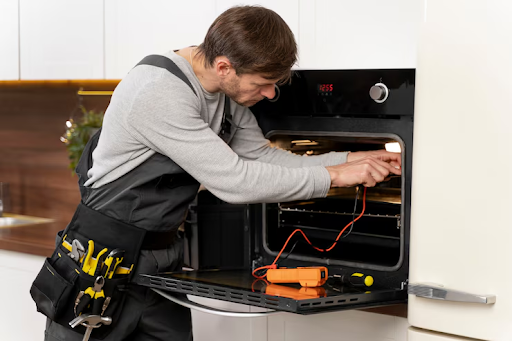Household appliances are the unsung heroes of our daily lives, quietly working to keep our homes running smoothly. From refrigerators preserving our food to washing machines cleaning our clothes, we rely on them constantly.
However, like any mechanical device, they can break down, often at the most inconvenient times. While calling a professional repair service is always an option, attempting some basic repairs yourself can save you time, money, and the hassle of waiting for an appointment.
This article provides essential tips to empower you to tackle common residential appliance repairs safely and effectively.
Prioritize Safety First: Disconnect Power Sources
Before attempting any appliance repair, the absolute most crucial step is to prioritize your safety. Always disconnect the appliance from its power source. For electrical appliances, unplug them from the wall outlet. For gas appliances, locate and shut off the gas supply valve.
Failure to disconnect the power source can lead to severe electric shock or gas leaks. Double-check that the appliance is completely de-energized before proceeding with any troubleshooting or repair work. Your safety should always be your top concern.
Diagnose the Problem Systematically: Observe and Listen
When an appliance malfunctions, take a systematic approach to diagnosing the problem. Observe the appliance carefully: What exactly is happening (or not happening)? Are there any unusual noises, smells, or error codes displayed? Listen for any strange sounds that might indicate a specific issue.
By carefully observing and listening to your appliance, you can often narrow down the potential causes of the problem and make the troubleshooting process more efficient.
Gather the Right Tools: Be Prepared
Having the right tools on hand is essential for successful appliance repairs. Basic tools like screwdrivers (Phillips and flathead), pliers, adjustable wrenches, and a multimeter can handle many common repairs. Depending on the appliance and the nature of the problem, you might also need specialized tools.
Investing in a basic appliance repair toolkit can be a worthwhile investment for any homeowner. Having the correct tools will not only make the job easier but also help prevent further damage to the appliance.
Start with Simple Fixes: Check Connections and Filters
Many appliance issues stem from simple problems that are easy to fix. Check power cords and connections to ensure they are secure. Examine filters (e.g., in dishwashers, washing machines, dryers) and clean or replace them if they are clogged.
A blocked filter can often lead to performance issues. For appliances that use water, check hoses and connections for leaks or blockages. Addressing these simple potential causes first can often resolve the problem without the need for more complex repairs.
Know Your Limits: When to Call a Professional
While attempting DIY repairs can be empowering, it’s crucial to recognize your limitations. If you are uncomfortable working with electricity or gas, or if the problem seems complex or involves internal components you are unfamiliar with, it’s always best to call a qualified professional appliance repair technician.
Attempting repairs beyond your skill level can lead to further damage to the appliance or, more importantly, pose a safety risk to yourself and your home. Knowing when to seek professional help is a sign of responsible homeownership.


